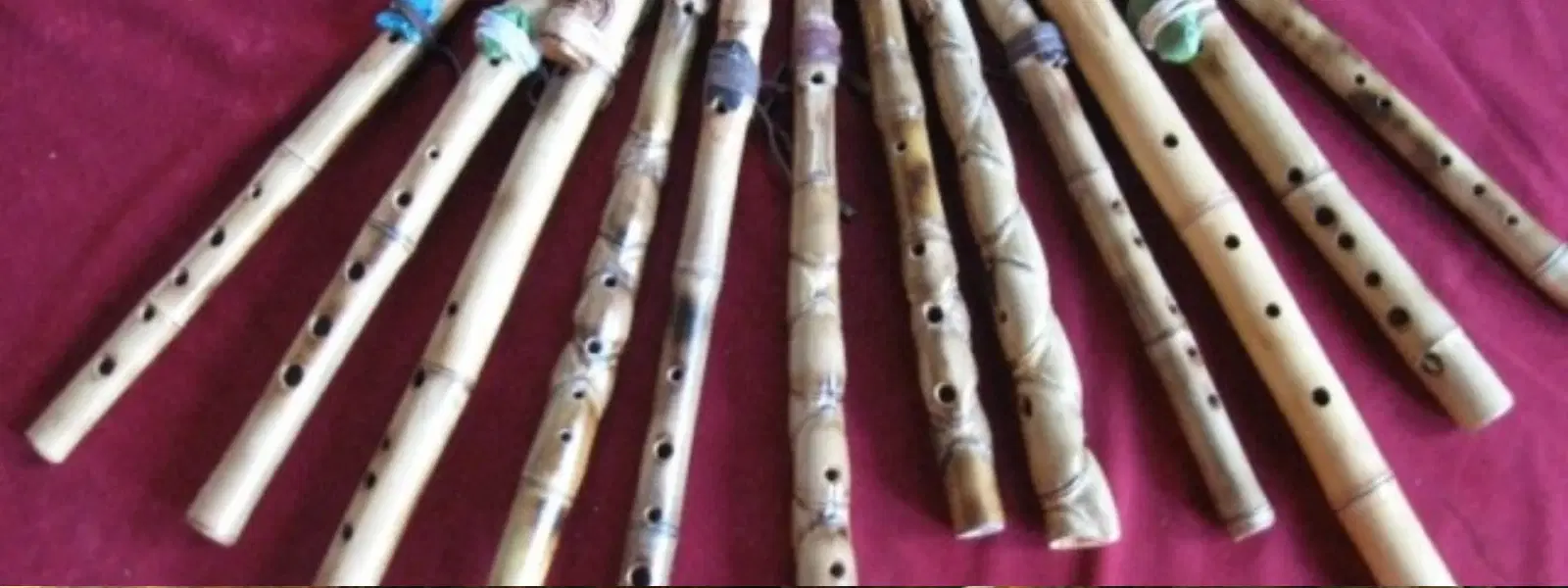
Flights
•03 min read

Imagine walking into a small village where the soft melodies of a handcrafted flute fill the air, carrying whispers of ancient traditions and soulful heritage. In many parts of the world, especially in villages with flute makers, music is more than just sound—it's a connection to the past, a celebration of artistry, and a symbol of communal spirit. This journey takes you through seven unique villages famed for their traditional flute making crafts, where artisan flute makers create masterpieces that resonate with history and heart.
Flute making is an art form with deep historical roots. Originating in ancient times, the craft has evolved through the centuries, merging old world techniques with modern aesthetics. Handcrafted flutes, once essential in ritual and celebration, continue to hold cultural significance today, serving as both musical instruments and storytellers of heritage. (Source: Historical archives on musical instruments)
Traditional flute making relies on natural materials such as bamboo and wood. Skilled artisans select these materials with care and use time-honored techniques passed down through generations. The process involves precise measurements, meticulous carving, and expert tuning, ensuring that each instrument delivers a unique sound. Across various regions, the methods differ, reflecting the local traditions and available resources, which makes each flute a true work of art.
Nestled in northern India, Pilibhit is celebrated for its exquisite bamboo flutes. Known as the "Bansuri Nagari," this village is a beacon for those who appreciate the seamless blend of art and spirituality. The artisans here work in close-knit communities, often during festivals like Krishna Janmashtami, where their flutes accompany devotional songs and vibrant celebrations.
In Bihar, a remarkable village tells a unique story of harmonious coexistence. Muslim craftsmen have been making flutes for centuries, primarily for Lord Krishna worshippers. This cultural intersection has ensured that the tradition of creating handcrafted flutes remains vibrant and resilient. The village not only preserves age-old techniques but also stands as a testimony to unity in diversity.

Zijing Village in China is celebrated as a thriving center for bamboo flute production. What sets this village apart is its global influence. Flutes crafted here are known for their impeccable quality and are exported around the world. The community's focus on innovation within traditional methods has led to a successful export-oriented approach, making Zijing a name synonymous with excellence in flute craftsmanship. (Source: Trade and export reports)
Maharashtra boasts a proud legacy in flute making, particularly through its locally renowned flutes. Local artisans dedicate their lives to perfecting the art of wooden flute craftsmanship. These flutes are a favorite among connoisseurs for their rich, soulful tones and the exquisite skill that goes into each piece.
Beyond these renowned hubs, there are numerous hidden gems in Eastern Europe and Southeast Asia where traditional flute making villages continue to flourish. These communities maintain a closer connection to nature and tradition, sustaining the legacy of handcrafted flutes with unique regional variations and delicate details.
The art of flute making plays an integral role in preserving cultural heritage in these villages. Traditional flute making is more than just an economic activity—it is a cultural ritual celebrated through annual festivals and community gatherings. These events allow local flute artisans to showcase their creations and pass down their extensive knowledge to younger generations.
The impact of flute making extends to the economic wellbeing of these communities. Villages with flute makers benefit not only from local tourism but also from global exports. Government initiatives and artisan support programs further bolster this craft, ensuring that the legacy continues to thrive while providing sustainable livelihoods for numerous families. (Source: Local government reports)

The journey from raw material to a beautifully crafted flute is a meticulous process. It begins with selecting the finest bamboo or wood, followed by careful carving and precise tuning. Every step is infused with the artisan's passion and dedication to the craft, resulting in a musical instrument that is as much a piece of art as it is a functional tool for expression.
With a growing interest in personalized experiences, many villages now offer custom-made flute options and workshops. Visitors can step into the world of local flute artisans, gaining hands-on experience and deeper insight into this ancient craft. These workshops are not only educational but also provide an intimate window into the rich traditions that sustain these communities.
"Did you know? In Pilibhit, flute makers often work in communal settings, blending their skills to create instruments that resonate with both tradition and modernity. This harmony reflects the deep cultural ties within the village."
Pilibhit in India, also known as "Bansuri Nagari," is one of the most famous places for flute making.
Traditional bamboo flutes crafted by skilled artisans are highly regarded for their quality and craftsmanship.
Flutes are traditionally made by skilled artisans in villages specializing in flute craftsmanship, using materials like bamboo and wood.
This exploration of villages with flute makers unveils not only the beauty of traditional craftsmanship but also the deep cultural narratives woven into every flute. From Pilibhit's harmonious communal practices to Zijing Village's export prowess, each community contributes a unique verse to the symphony of global music traditions. The detailed process, cultural preservation, and economic impact of these artisanal crafts inspire us to appreciate and preserve these precious traditions for generations to come.